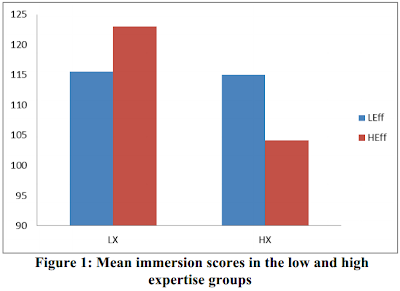- Anna L Cox: Senior lecturer in Computer Human Interaction and researcher at the University College London. Has written a large number of papers pertaining to high-level concepts in video games, with an emphasis on immersion.
- Paul Cairns: Senior lecturer and researcher associated with the University of York. His past work focuses between gaming concepts and a wide variety of different topics concerning computer science.
- Pari Shah: Associated with the department of Psychology & Language Sciences in the University College London. Research mostly pertains to psychology-related material.
- Michael Carroll: Researcher in Department of Computer Science of the University of York.
Summary
This paper attempts to explore the role that challenge has in overall video game immersion, using three different experiments to qualitatively gauge player immersion with the independent variable being different tweaks to existing games to make them more challenging in different ways. They sought to answer the question whether more challenge meant more immersion in games, and if so, in what way.
Using a pool of several students ranging from 20 to 41 in number, the first experiment consisted of a typical tower-defense game whose tweaks were primarily geared toward "physical challenge". Essentially, this meant that more clicks and physical movement was required from the player as opposed to the same game that did not demand as many inputs from the user, and player immersion was based on this change in design. This was balanced in such a way that the more physically demanding version was not deliberately harder or broke the game. The second experiment related to time pressure, using the popular game Bejeweled to alternate between a timed mode and a regular un-timed mode. This was used to gauge how players felt immersed under a more stringent parameter of playing. The third experiment was a combination of time pressure and expertise in the game Tetris to gauge how the player was immersed under these two pressures.
Related Works
The works that I was able to find that related to the topic of video game immersion on dependent factors were numerous and wide. The following were the ten most relevant papers on the subject:
- Effects of different scenarios of gamedifficulty on player immersion
- The Case for Dynamic Difficulty Adjustment in Games
- Video games: Perspective, point-of-view, and immersion
- Measuring and defining the experience of immersion in games
- Extending Reinforcement Learning to Provide Dynamic Game Balancing
- Designing Action Games for Appealing to Buyers
- AI for Dynamic Difficulty Adjustment in Games
- Difficulty Scaling of Game AI
- Dynamic Difficulty Controlling Game System
- Emotion Assessment From Physiological Signals for Adaptation of Game Difficulty
All ten of these papers had at least some significant portion of its study regarding immersion, and particularly things that affected said immersion and how it can be measured to achieve a desired results. In the case of some of the papers, this was explored in order to be able to construct a system or particular game based on what factors affected immersion, among many other aspects explored in each study.
This shows that many of the concepts that the particular paper was exploring are not particularly novel or new. However, this study was able to make an empirical observation (albeit consisting of qualitative evidence) on what factors affected immersion and attempted to gauge to what extent these factors affected it. Since immersion is one of the most desired effects from a developers' perspective, I found the vast amount of interest in the subject not particularly surprising.
Evaluation
The evaluation of the first experiment was dependent on whether the immersion was heightened, lessened, or remained the same as the game became more physically demanding. The results can be most accurately summarized with the following two graphs:
As can be seen, the actions and performance between the low effort (less demanding game) and the higher effort one had marginal difference in terms of player performance, but most importantly, had next to no difference in terms of player's perception of immersion. The second graph presents the result in a more visual way. The researchers eventually concluded this since the data reflected the lack of change.
The second experiment of adding a time constraint to the game Bejeweled yielded the following results:
The results in the table showed that the total immersion of the players was significantly increased with the addition of time pressure. In terms of scoring, the researchers found that the scores for both "No Time Pressure" and "Time Pressure" were relatively the same. This served as an example where time pressure did add to the immersion of the game, which contrasted with the results of the first experiment which added more physically demanding controls.
The third experiment consisted of adding both time pressure and a higher game challenge. The results were as follows:
The results only show the level of challenge factor scores between the lower level play and the higher level. However, the researchers made a link between the level of challenge and how it influences player immersion. They concluded that it is likely that difficulty affects player immersion.
Discussion
I personally found this study interesting, if only a little subjective in its overall conclusions. Of particular note is the gauging of "immersion" as an objective number. While it's possible to tell whether a player is immersed in a game or not, gauging the interest level can only, at best, be qualitative. Therefore, the study tends to move more toward a general psychological test rather than an empirical extraction of data. What this means is that different users can gauge their own immersion in different ways, and the ways the games were constructed as well as their own inherent "immersive" factors most likely contribute as well. The fact that the experiment used three entirely different games for each experiment results in a less clear pattern.





No comments:
Post a Comment